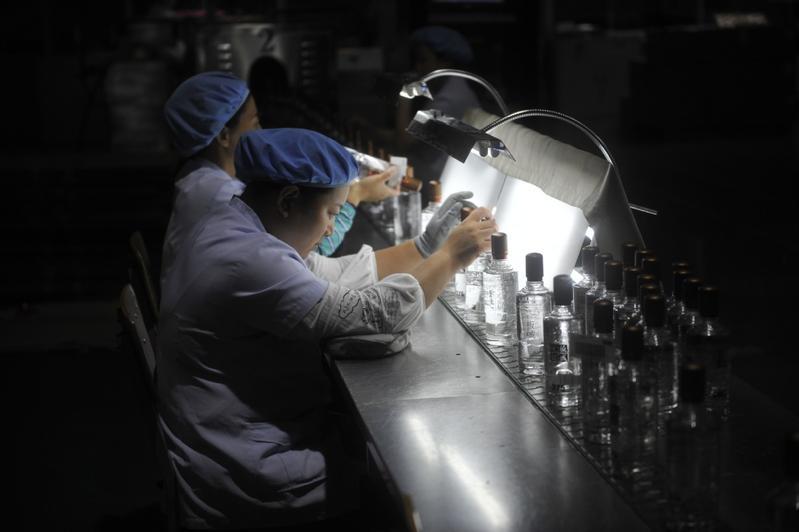 In this undated photo, employees perform quality checks at a baijiu-making facility in Chengde county, Hebei province. (PHOTO / XINHUA)
In this undated photo, employees perform quality checks at a baijiu-making facility in Chengde county, Hebei province. (PHOTO / XINHUA)
International spirit companies have huge growth potential in China as global brands have yet to fully penetrate the world's largest alcoholic spirits market, according to a report by RIES Positioning Strategy & Consulting.
While spending on spirits in China reached 600 billion yuan (US$87.96 billion) last year, accounting for over one-fifth of the global total, just four percent were contributed by global mainstream spirit firms, the study said.
The lion's share was occupied by China's baijiu, represented by the likes of Kweichow Moutai and Wuliangye, whose consumption by mostly Chinese customers reached 5.2 billion liters last year.
Foreign liquor makers should prioritize category promotion rather than brand promotion so that they can 'implant' whiskey, brandy, and other similar brand categories in the minds of consumers.
Xiao Yao, senior consultant, RIES China
"Local customers lack full knowledge of the brand categories of whiskey, brandy, and vodka, but have partial recognition of specific brands (such as Louis XIII, Martell, and Jack Daniels)," said RIES China Senior Consultant Xiao Yao in offering advice to international spirits companies.
In 2019, the market for brandy was worth roughly 18.5 billion yuan, making it the top category of foreign spirits in China. However, the market is weighed down by sluggish growth rates.
"Foreign liquor makers should prioritize category promotion rather than brand promotion so that they can 'implant' whiskey, brandy, and other similar brand categories in the minds of consumers," Xiao said.
China's whiskey market, which is worth roughly 3.65 billion yuan in 2019, has exhibited a relatively stable outlook.
Impacted by the COVID-19 pandemic, the net profit for baijiu in 2020 is projected to slide for the first time in seven years, although high-end baijiu have been better at withstanding the blow of the disease.
For instance, Moutai reported its net income jumped 13 percent in the first half as the recovering local economy boosted demand for its ultra-premium line of baijiu.
ALSO READ: Moutai surpasses ICBC as biggest mainland-listed stock
While revenue growth remained solid in the last quarter, slower volume growth suggests a more difficult recovery in demand, Bernstein analysts led by Euan McLeish said in a research note in July.
Xiao noted baijiu is also in a position to penetrate overseas markets, but as opposed to strategies for international spirits producers, baijiu makers should prioritize brands rather than the product category.
"A retrospect on the history of whisky and brandy giants shows that their development are closely linked with a country's strength," said Xiao. "With China's rising status, baijiu should seize the precious opportunity for global expansion."
READ MORE: Liquor industry drinks to better times
To attract young Chinese consumers, the report said liquor makers should roll out low alcohol content offerings and multiple flavors such as juice mixtures.
"During our research, we find that spirits consumption happens naturally, such as when people reach a certain age," Xiao said. "These innovations are set to cultivate people's alcohol consumption habits from a relatively younger age."



